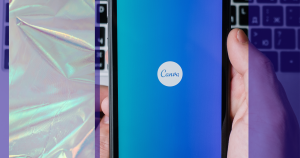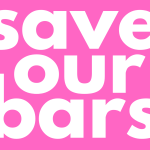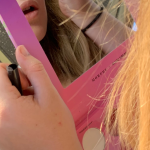This information was correct at time of publishing: 30 January 2020. Refer to QLD Health for updated information.
Over the past week, GLASS has been watching coronavirus stories hit every major news publication. We’re sure you’ve seen the news too. On the 29th of January, the first Queensland patient was identified in the Gold Coast. Many Australians, particularly those in major economic centres like Brisbane, are understandably concerned. However, it is important to avoid misinformation and mass hysteria and to follow the protocol outlined by health authorities.
Please follow the Queensland Health Facebook page, which will provide updates. Read on for information and general advice regarding coronavirus. Disclaimer: This is general advice only and GLASS Media is in no way providing concrete diagnoses to the reader. This article is for informational purposes, please contact your GP for specific information.
What is the Wuhan coronavirus?
There is no one coronavirus. The coronaviruses are a broad subfamily of viruses commonly associated with respiratory tract infections and flu symptoms. Some strains of the common cold are caused by coronaviruses; albeit most are from rhinoviruses. The danger comes from more serious strains causing either viral or bacterial pneumonia. In recent history, coronaviruses were responsible for SARS and MERS.
The novel Wuhan coronavirus was first reported in the Wuhan province of China after a cluster of pneumonia cases. The Lancet, the world’s oldest and most prestigious medical journal, reported on the first 41 patients. Like many of the more dangerous coronaviruses, the Wuhan virus is believed to have originated from an animal source. In this case, bats are believed to be the source.
Disease symptoms have a median incubation period of 8 days and include general flu symptoms such as fever, cough, and fatigue; as well as an exceedingly high incidence of pneumonia.
In Queensland
Queensland has confirmed its first case of the novel Wuhan coronavirus on the 29th of January. The 44-year-old Chinese national hailing from Wuhan is being treated in the Gold Coast University Hospital. Queensland Health will likely continue to update when more cases are identified.
When should I go to a doctor?
There is very recent evidence of asymptomatic or minimally symptomatic people who have transmitted the disease. This means that even if you have not recognised any symptoms, you may still carry the Wuhan coronavirus.
For this reason, Queensland Health has advised all travellers who have visited Hubei to self-isolate with no visitors for 14 days. This includes avoiding university. Please, for your fellow classmates: do not risk it.
If you have not been to Hubei but have travelled through China in the past 14 days, you should call your GP immediately if you recognise symptoms. Please do not visit in person without calling. Your clinic needs time to take necessary precautions.
Remember that symptoms are very similar to flu or the common cold. It is important that you report these symptoms, even if they do not worry you. In particular, if you have a temperature, followed by a dry cough, contact your doctor.
Should I avoid people I know from China or who have recently visited China?
If your friend has returned from Wuhan in the past fourteen days and has not self-isolated, please urge them to do so and avoid all contact with them. However, if all precautions are taken and 14 days have passed without symptoms, posts like the ones telling people to avoid suburbs with majority Chinese-speaking residents are harmful. It would be unfortunate if university students were to behave similarly.
Should I avoid travelling?
Before travelling, always check the Australian Government’s travel advisory website at smartraveller.gov.au. Current advice is to reconsider if you need to travel to China. The Australian Government also specifically advises that you do not travel to Hubei Province.
If you or someone you know is in China and needs assistance, contact +61 2 6261 3305 from overseas or 1300 555 135 from within Australia.
Do face masks and washing hands actually help?
Yes and no. Single-use surgical masks will not stop airborne transmission as they do not seal the nose and mouth from particles. Some protection, of course, is better than no protection. N95 respirator facial masks, often used in construction, are more effective. However, these cannot be used if you have facial hair and can cause coughing and shortness of breath confusable with cold or flu symptoms.
What you should be doing:
Regularly washing hands with soap and hot water for at least 20 seconds or using an alcohol-based hand sanitiser regularly avoid exposure is strongly advised by the WHO.
Like other viruses, particles that make contact with a person’s hands can enter the body through scratching one’s eyes, nose or mouth with unwashed hands. Coughing and sneezing should always be covered with a flexed elbow or tissue – covering with hands is not good enough.
Should I be afraid?
Do not get caught up in sensationalist news. News sources such as the Geller Report and the Daily Mail have reported more than 10,000 people have died. There is zero evidence for this claim, and the WHO has confirmed only 2000 people have contracted the virus (of which the vast majority of cases are within China), with a death toll of over 100. Furthermore, claims of the virus being patented are also misleading, with patents only existing for attenuated strains used in developing vaccines. The Wuhan coronavirus is not a bio-weapon.
What is true about the Wuhan coronavirus is that by early reports, it has a mortality rate of 2-4%. To put that into perspective, everyday influenza and the swine flu have a mortality rate of 0.01-0.02%; SARS had a mortality rate of 10%, and bird flu had a mortality rate of 60%.
To reiterate, the mortality rate for Wuhan Coronavirus is not 10%; it is 2-4%.
What is concerning about this strain of coronavirus is how quickly it may spread. Australia had 37.5 thousand confirmed cases of swine flu over the course of the 2009 epidemic, of which, Queensland made up a bit under one-third of confirmed cases. Unlike swine flu, Wuhan coronavirus is airborne and is substantially more infectious. It also has a higher incidence of pneumonia in patients.
So, should you be afraid? Maybe. Fear-mongering is never helpful when it comes to disease control. However, there is a very substantial chance that the Wuhan virus will spread quickly. It is very important to follow protocol to minimise our exposure to the virus. People with poor immune systems, the elderly and infants are at particular risk.
Is there a vaccine?
As of the 27th of January, NCBI’s GenBank has several publicly available accessions of the complete coronavirus sequence. On the 29th, University of Melbourne’s Virus Identification Laboratory has successfully cultured the virus from patient samples; allowing positive controls to be shipped out to virology labs across the world.
We can expect in the near future that pharmaceutical companies around the world will use these cultures to develop weakened – or attenuated – strains (as was the case with just about every flu outbreak). The attenuated strain is then verified to be recognisable by immune cells and reproduced over the course of another three or so weeks.
In the case of influenza, what follows is a series of clerical work including generation of reference reagents, vaccine optimisation, manufacture, and clinical trials, which often leads to a cumulative time of five to seven months from virus identification to the sale of vaccines.
Coronaviruses tend to be a bit more complicated than the flu due to novel reassortments of their genomes (as is the case for 2019-nCoV), however, the timeline is much the same. In recent history, the swine flu’s genome sequence was published in April 2009, vaccines were developed by UQ scientists by June that year and were commercially available by September. Efforts have already been made to expedite this process.
Conclusion: Don’t panic. However, please stay aware. Mind your hygiene during flu season and always consult with a doctor if you have been travelling or if flu symptoms emerge.
Article Credit: Alexander Asher (student, UQ Bachelor of Advanced Sciences, QUT Bachelor Law)
Proofed: Eric Tan (student, GU Medicine)
Edits: Lead by QUT GLASS Editor Ashleigh North, Sub-Edited by Jasmin Graves and Em Readman.
Special thanks to QUT Medical Centre, who advised on procedure.
Further reading:
Huang et al (2020). Clinical features of patients infected with 2019 novel coronavirus in Wuhan, China. The Lancet. Link
Novel Coronavirus. Queensland Government Health Conditions Directory. Link
Destinations travel advice latest update: China. Australian Government Smart Traveller. Link
Lai et al (2012). Effectiveness of facemasks to reduce exposure hazards for airborne infections among general populations. J R Soc Interface 9(70). Link
Rigby et al (2017). Hand decontamination in clinical practice: a review of the evidence. Br J Nurs 26(8). Link
Novel Coronavirus (2019-nCoV). World Health Organisation. Link
2019-nCoV Sequences (Wuhan coronavirus). NCBI Genbank. Link
Australian influenza report 2009 – 12 -18 December 2009 (#32/09). Australian Government Department of Health. Link
Funke, D & Kertscher, T (2020). Fact-checking hoaxes and conspiracies about the coronavirus. Politifact. Link
Elliot, R (2020). Melbourne scientists first to grow and share novel coronavirus. University of Melbourne Newsroom. Link
Pandemic influenza vaccine manufacturing process and timeline. World Health Organisation. Link
Cetron et al (2004). Learning from SARS: Preparing for the Next Disease Outbreak: Workshop Summary. National Academies Press (US). Link








